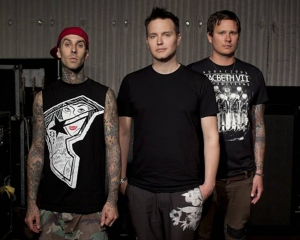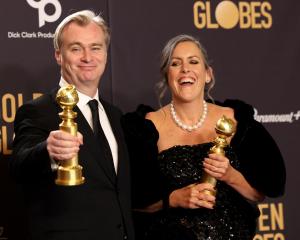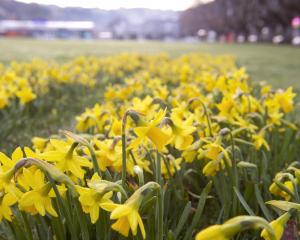Climate scientists tell it like it is in a new documentary, writes Tom McKinlay.
There are a lot of scientists in the documentary Thin Ice.
Physicists (atmospheric and otherwise), geologists, paleoclimatologists and paleobiologists, oceanographers, marine biologists and atmospheric chemists, among others.
And that is very much the point, says the documentary's producer, director and photographer Simon Lamb.
Thin Ice is an attempt to provide direct and unmediated access to the science behind concerns about the Earth's changing climate.
Who better to tell the story, than the scientists themselves, Dr Lamb, an associate professor of geophysics at Victoria University of Wellington, says.
''The main motivation - which has remained unchanged throughout the whole project - is to let climate scientists explain in their own words the scientific understanding of climate change.
''My view is that if you are going to ask society to take action, you owe it to them to explain the scientific basis for any concerns about climate change properly,'' Dr Lamb, a documentary maker of some experience, says.
While Dr Lamb says Thin Ice, a collaborative effort between Victoria and Oxford universities, was not conceived as a shot across the bows of the small number of climate change sceptics still afloat, it is likely to cover the points they raise.
''What I think became clear to me about climate change is that when you put together all the different aspects of the science, it is then that the evidence becomes overwhelming,'' he says.
''But if you focus on just one narrow bit of it, then there is always some element of uncertainty, and I think that possibly is a viewpoint that the general public do not appreciate.
''The climate scientists are coming at it with an awareness of this much wider breadth of the subject, whereas people who try to challenge the science - deniers in particular - don't have that breadth. So they think it is about undermining one thing and then the whole edifice comes tumbling down.''
Dr Lamb gives as an example the issue of the degree to which the upper parts of the atmosphere are warming. In theory, the upper parts should warm more quickly. But until a few short years ago the techniques available to scientists were not good enough to demonstrate that was happening.
Weather balloons with thermometers strapped on, did not cut it.
''The sceptics got incredibly excited about that, and said that, of course, this means that the whole thing is completely wrong.
''But the scientists involved in this were not worried at all.''
They remained calm and looked for better ways to collect the data they needed.
''Eventually as the techniques improved - in fact with satellite imaging - it is resolved now,'' Dr Lamb says.
The documentary is not all about the pointed-headed end of climate change.
''There's an anecdotal part of the film where I film Sami reindeer hunters in northern Norway,'' Dr Lamb says.
''What was interesting about that, certainly from my perspective, was whether people who live close to the environment notice these changes as well. Or whether it is just something you observe as a scientist with a thermometer.
''The answer is, of course, that they are acutely aware of it.
''Because they do not need a thermometer to know that spring is coming early or the rivers are not freezing as much as they used to, or you are getting rain in December when you never did before, it is much windier. They know these things, so it is obvious to them.''
In the course of Thin Ice, Dr Lamb travels from Wellington to the Antarctic, where scientists are busy studying ice cores, to Oxford University and back to Wellington, where atmospheric physicist Katja Riedel scoops containers of fresh air from the windswept coast to measure for CO2 content.
As Dr Lamb does so, the science in the film swings between the easily grasped and readily observed, to the more nuanced and subtle.
Oxford atmospheric physicist Ray Pierrehumbert explains at one point that carbon dioxide's role as a greenhouse gas has long been understood, as it interferes with infrared radiation leaving the planet. Riedel's work sampling air from the Southern Ocean, also appears straightforward, charting as it does an inexorable upward curve in CO2.
Dr Lamb agrees that yes, ''the basic physics is simple, but there are also feedbacks in the system that make putting a precise number on the warming for any given increase in CO2 more difficult''. Water vapour is important in such calculations as it is a strong greenhouse gas, but also forms clouds that can reflect sunlight back out into space.
Paleoclimate modeller Matt Huber takes up the point in the documentary, talking about the difficulty of nailing down the precise sensitivity of the climate to greenhouse gases - is it as low as 1degC for doubling of CO2 in the atmosphere, or as high as 5degC for doubling?
In the long run, it could be somewhere at the higher end, while in the next hundred years or so, before all the ice sheets in the Arctic and Antarctic have had time to melt, it is likely to be slightly lower, Dr Lamb says.
''But the best estimate seems to be in the range 2degC-3degC for doubling of CO2.
''This means that in the next hundred years or so, when CO2 in the atmosphere may well be four-times pre-industrial levels, if we burn all the fossil fuel there is, then global temperatures will be a minimum of 4degC warmer.
''To put this in some sort of perspective, the change in global temperature between the height of an ice age and an interglacial (which we are now experiencing) is in the range 4-6degC.''
The documentary made, Dr Lamb, a geologist, not a climate scientist, has been left utterly convinced by the science.
''If we went back 30 or 40 years and you asked me, `so what branch of science do you think is most important for the man in the street to know about', I don't think I would ever, in my wildest dreams have said climate science,'' Dr Lamb says.
But now, ''it would be right up there''.
The film
Thin Ice is available as a download from the website www.thiniceclimate.org at an early-bird price until May 15.












